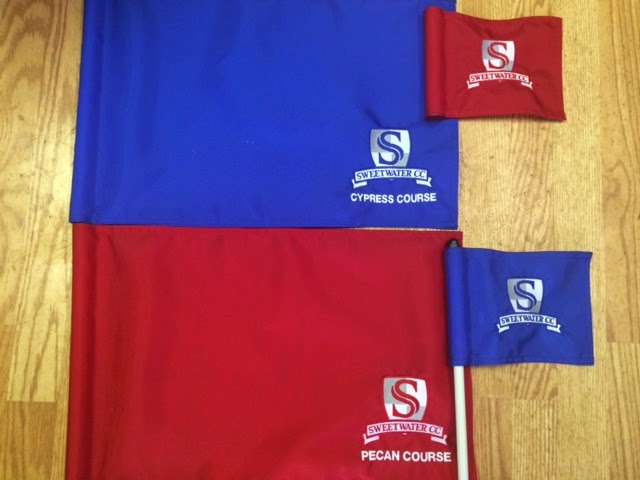I’m sure many of you have either
heard us talking about the new equipment or have actually seen it out there in
action, but I’d like to spend a little time letting you know about it in detail
and what it will do for our course conditions.
It was very easy to tell for anyone who knows anything about our
operation that we just didn’t have enough equipment to maintain such a large
place up to the standard that our club desires. CBIGG listened to our concerns
and came through big time and got us what we needed. That is a very large commitment to make when
you are talking about 30+ clubs. The
total amount spent across the company was over $3 million! This will go a long way in helping us improve
your experience out on the course.
CBIGG, after careful
consideration of all 3 major turf equipment brands, (Toro, Jacobsen, and John
Deere) decided to go with Jacobsen. Most
of our old equipment that you are used to seeing on the course is Toro (red
machines). The Jacobsen machines are all
orange so you can definitely see what is new out there. There are some minor differences in the
operation of the new machines but the crew has quickly adjusted and you will
see the same quality of cut that you are used to seeing with the Toro. The biggest differences that you will see
from years’ past is the maintenance intervals have been improved to give a
better cut no matter the machine or manufacturer, and the addition of more units
only improves the quality and time needed to get the job done.
In all, we will be adding 19
pieces of equipment to our fleet! There
are still some products working their way to us but all of the cutting units
are here and in action – 7 cutting units, 1 sprayer, 1 tractor/loader, 1 cart
path edger, 2 heavy duty trucksters, and 7 utility carts – we are still waiting
on the utility carts and sprayer. I’ll
spend some time here talking about the cutting units and come back later and
talk about the rest of the equipment. I put the price of each machine next to
what we received just so you can see how big of an investment this is. These units aren’t like the riding mowers you
can buy at Home Depot.
Starting with our most important
asset, the greens, we got two new Jacobsen Greens Kings (price - $25,000 each).
They have 15 blade reels, designed to cut about twice as much grass as the standard
11 blade units of days past. Our old
greens mowers, the Toro 3250, had 14 blade reels and gave us similar results
that we will see now. These Toro units
will now be used for cutting tee boxes and approach areas around the
greens. Since I have been here we have
been cutting tees/apps with large fairway units, as that is all we had. This just
puts unnecessary stress on our most important grass areas. So, this addition of
new greens mowers will improve both greens and tees. The Toro units were ground and new bed knives
placed on them so the quality of cut is as good as new. Big improvements will be made to these areas
as you can already see if you have played recently.
Fairways were definitely a
struggle when I arrived. We had older
units, but due to their age and the amount of hours on them only one worked at
any given time. Mowing 50 acres of
fairways is just way too much to ask for one unit every week. Even though both units were only 4-5 years
old, the amount of hours placed on them gave them the real life equivalent of
about 8-10 years in age, and they weren’t maintained properly. We added 2 new Jacobsen LF570s (price -
$46,000 each) to the fleet to help get the fairways mowed quicker and with
better quality. With more units at our
disposal, there will be less hours placed on each machine and less wear on the
blades, which is only a good thing all around.
Roughs got a huge boost with the
addition of 3 new units. We added 2 new
Jacobsen AR-522s (large 5 deck cutting units – price $43,000 each) and 1 AR-3
(smaller 3 deck unit – price $26,000 each).
I’ve worked at a number of 36 hole properties in my time and in order to
get the roughs mowed once per week we needed 2 large units and 1 smaller unit per
course(for about 120-150 acres of turf per course). When I got here at Sweetwater we only had 2
large units and 1 small unit for 350 acres of turf! Unless the machines ran 24 hours a day it
just wasn’t possible to get around both courses in a week, so it took a good
two weeks to get it done. This left
piles of clippings everywhere and mad golfers having to hit out of 4” tall
summer bermuda grass – no fun! We now have enough cutting units to be able to
take care of each course every week, which will make for a better look and
quality to the turf but also a better golfing experience. Huge improvement!
I think you will find in a short
period of time that all of these new tools will drastically improve the course
conditions here at Sweetwater. There is
a purpose behind every machine and why we have it in our fleet, and it is all
designed to give us the best greens, tees, fairways, and roughs possible. This
big $325,000 investment for Sweetwater shows that CBIGG is committed to quality
and improving your experience here at the club.


























